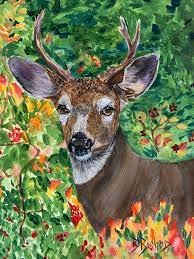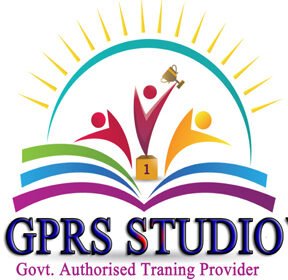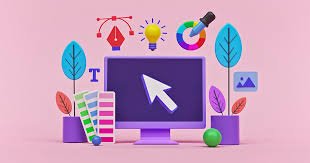colour key artist (6 month course)
colour key artist click here
Brief Job Description: Individuals at this job need to conceptualize the color keys
for all elements within a production.
Personal Attributes: This job requires the individual to have a good knowledge of
color theory, light and shadows. The individual must know how to draw and
apply color effects. The individual must be able to design color keys consistent
with the creative style of the production using software such as Adobe
Photoshop.

Description
Attitude poses Attitude poses are used to describe the body language and personality of
the characters
Budget Budget is an estimate of the total cost of production that may include a
break-up of cost components
Character line-up Character line-up is the portrayal of characters side-by-side
Character turnarounds Character turnarounds are used to depict the characters look from all
angles
Clean-up Refining the interim/rough animation
Color keys Color keys are used to depict the mood of the production through hues
and tones
color theory Color theory is the art of combining all the colors in the color wheel to
create specific color combinations
Core Skills/Generic
Skills
Core Skills or Generic Skills are a group of skills that are key to learning and
working in today’s world. These skills are typically needed in any work
environment. In the context of the OS, these include communication
related skills that are applicable to most job roles.
Creative Brief Creative brief is a document that captures the key questions that serve as
a guide for the production including the vision, objective of the project,
target audience, timelines, budgets, milestones, stakeholders etc.
Description Description gives a short summary of the unit content. This would be
helpful to anyone searching on a database to verify that this is the
appropriate OS they are looking for.
Function Function is an activity necessary for achieving the key purpose of the
sector, occupation, or area of work, which can be carried out by a person
or a group of persons. Functions are identified through functional analysis
and form the basis of OS.
Job role Job role defines a unique set of functions that together form a unique
employment opportunity in an organization.
Knowledge and Understanding
Knowledge and Understanding are statements which together specify the
technical, generic, professional and organizational specific knowledge that
an individual needs in order to perform to the required standard.
Lighting keys Lighting keys are used to depict the mood of the production through
intensity, tine and shadows
Mouth chart Mouth chart is used to portray the emotions and expressions of the
characters
National Occupational
Standards (NOS)
NOS are Occupational Standards which apply uniquely in the Indian
context.
Occupation Occupation is a set of job roles, which perform similar/related set of
functions in an industry
Occupational Standards
(OS)
OS specify the standards of performance an individual must achieve when
carrying out a function in the workplace, together with the knowledge and
understanding they need to meet that standard consistently. Occupational
Standards are applicable both in the Indian and global contexts.
Keywords /Terms Description
NOS National Occupational Standard(s)
QP Qualifications Pack
NSQF National Skill Qualifications Framework
NVEQF National Vocational Education Qualifications Framework
NVQF National Vocational Qualifications Framework
Understanding the script
Description This OS unit is about interpreting the script/ brief/ storyboard/ concept for the
animation and design process

Scope This unit/task covers the following:
Interpret the script/ brief/ storyboard/concept correctly
Liaise with the team to improve understanding
Performance Criteria (PC) w.r.t. the Scope
Element Performance Criteria
Interpret the script/ brief/ storyboard correctly
To be competent, the user/individual on the job must be able to:
PC1. understand the artistic and communication goals of the script, brief or
storyboard with respect to the individual’s role
PC2. be aware of the intended medium and target audience, and how this may
affect animation processes
PC3. understand the aspects related to the design brief (appearance, complexion,
dressing, moods, personalities, expressions etc.)
PC4. understand the requirements according to the scripts (number, types,
duplicates etc.) based on the individual’s role and its requirements
PC5. understand the specifications for the background and other aspects
(dimensions, operating parameters etc.) based on the individual’s role and its
requirements

PC6. understand the technical needs of the project with respect to the job role
(Television, Film, Gaming, Internet, DVD etc.)
PC7. understand the of the concept, which may be self-created, provided in a brief,
or arrived at via discussions with relevant personnel (Director, Executive
Producer etc.
Liaise with the team to improve understanding
PC8. liaise with relevant personnel (Art Director, Producers, Animation Supervisor
etc.) to better understand script elements, as appropriate
Knowledge and Understanding (K)
A. Organizational Context (Knowledge of the company / organization and its processes)
The user/individual on the job needs to know and understand:
KA1. the creative vision and elements of production relating to the job role
KA2. the project pipeline/schedule and timelines with respect to the individual’s role
KA3. the intended purpose/ end-use of the models/ designs that need to be created
by the individual
B. Technical Knowledge
The user/individual on the job needs to know and understand:
KB1. principles of animation
KB2. how to assess the script and its artistic and communication goals
KB3. how to extract and interpret relevant information regarding the script’s vision
KB4. how to discuss and understand relevant information regarding the concept’s
vision from relevant personnel (Art Director, Producers, Animation Supervisor
etc)
KB5. how to research and tap into the sources for procuring information/
background material that will enhance understanding of the concept
KB6. applicable copyright norms and intellectual property rights
KB7. applicable health and safety guidelines
Skills (S) (Optional)
A. Core Skills/ Generic Skills Writing skills
The user/individual on the job needs to know and understand how to:
SA1. document notes while understanding the brief, requirements and
specifications to refer to during the production process
Reading skills
The user/individual on the job needs to know and understand how to:
SA2. read and understand the script/ brief/ storyboard
SA3. research links, videos, artwork etc. that can be used as references
Oral communication (Listening and speaking skills)
The user/individual on the job needs to know and understand how to:
SA4. understand the central idea and the concept of the script

B. Professional Skills Plan and organize
The user/individual on the job needs to know and understand how to:
SB1. analyze the tasks required and estimate the time required for each task, so as
to manage the allotted work and achieve it in given schedules
Problem solving
The user/individual on the job needs to know and understand how to:
SB2. critically analyze the various elements of the script and the work that may be
required in relevance with the individual’s role
Decision making
The user/individual on the job needs to know and understand how to:
SB3. break down scripts in terms of major and minor characters.
Customer centricity
The user/individual on the job needs to know and understand how to:
SB4. check that your own work meets customer/project requirements
Critical thinking
The user/individual on the job needs to know and understand how to:
SB5. foresee the characters to be developed as per the script updating

Analytical thinking
The user/individual on the job needs to know and understand how to:
SB6. have a keen eye for details




